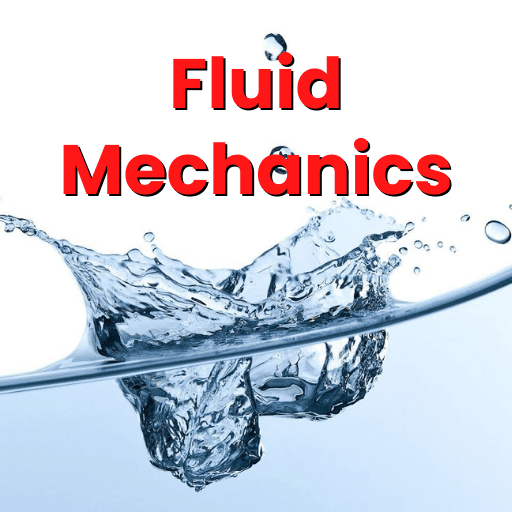Best Study Material for Mechanical Engineering Exam
Mechanical Engineering Exam > Mechanical Engineering Notes > Fluid Mechanics for Mechanical Engineering > Recap: Fluid Kinematics
Recap: Fluid Kinematics | Fluid Mechanics for Mechanical Engineering PDF Download
Recap
In this course you have learnt the following
- Kinematics of fluid deals with the geometry of fluid motion. It characterizes the different types of motion and associated deformation rates of fluid element.
- The fluid motion is described by two methods, namely, Lagrangian method and Eulerian method. In the Lagrangian view, the velocity and other hydrodynamic parameters are specified for particles or elements of given identities, while, in the Eulerian view, these parameters are expressed as functions of location and time. The Lagrangian version of a flow field can be obtained from the integration of the set of equations describing the flow in the Eulerian version.
- A flow is defined to be steady when the hydrodynamic parameters and fluid properties at any point do not change with time. Flow in which any of these parameters changes with time is termed as unsteady. A flow may appear steady or unsteady depending upon the choice of coordinate axes. A flow is said to be uniform when no hydrodynamic parameter changes from point to point at any instant of time, or else the flow is non-uniform.
- The total derivative of velocity with respect to time is known as material or substantial acceleration, while the partial derivative of velocity with respect to time for a fixed location is known as temporal acceleration.
Material acceleration = temporal acceleration + convective acceleration. - A streamline at any instant of time is an imaginary curve or line in the flow field so that the tangent to the curve at any point represents the direction of the instantaneous velocity at that point. A path line is the trajectory of a fluid particle of a given identity. A streak line at any instant of time is the locus of temporary locations of all particles that have passed through a fixed point in the flow. In a steady flow, the streamlines, path lines and streak lines are identical.
- Flow parameters, in general, become functions of time and space coordinates. A one dimensional flow is that in which the flow parameters are functions of time and one space coordinate only.
- A fluid motion consists of translation, rotation and continuous deformation. In an uniform flow, the fluid elements are simply translated without any deformation or rotation. The deformation and rotation of fluid elements are caused by the variations in velocity components with the space coordinates. The linear deformation or strain rate is defined as the rate of change of length of a linear fluid element per unit original length. The rate of angular deformation at a point is defined as the rate of change of angle between two linear elements at that point which were initially perpendicular to each other. The rotation at a point is defined as the arithmetic mean of the angular velocities of two perpendicular linear segments meeting at that point. The rotation of a fluid element in absence of any deformation is known as pure or rigid body rotation. When the components of rotation at all points in a flow become zero, the flow is said to be irrotational.
- The vorticity is actually an antisymmetric tensor but it is defined as a vector that equals to two times the rotation vector. Vorticity is zero for an irrotational flow.
- The existence of a physically possible flow field is verified from the principle of conservation of mass.
The document Recap: Fluid Kinematics | Fluid Mechanics for Mechanical Engineering is a part of the Mechanical Engineering Course Fluid Mechanics for Mechanical Engineering.
All you need of Mechanical Engineering at this link: Mechanical Engineering
|
56 videos|106 docs|75 tests
|
FAQs on Recap: Fluid Kinematics - Fluid Mechanics for Mechanical Engineering
| 1. What is fluid kinematics in civil engineering? |  |
| 2. How is fluid kinematics important in civil engineering? |  |
Ans. Fluid kinematics is essential in civil engineering as it helps engineers analyze and design various hydraulic systems. By studying fluid behavior, engineers can determine the flow rates, pressures, and velocities of fluids within pipes, channels, and open channels. This knowledge is crucial for designing efficient and sustainable water supply and drainage systems.
| 3. What are the main parameters studied in fluid kinematics? |  |
Ans. In fluid kinematics, the main parameters studied include velocity, acceleration, and turbulence. Velocity refers to the speed and direction of fluid flow, while acceleration measures the rate at which the velocity changes. Turbulence refers to the chaotic and irregular motion of fluid particles and is important to consider in designing structures that can withstand fluid forces.
| 4. How does fluid kinematics relate to fluid dynamics in civil engineering? |  |
Ans. Fluid kinematics and fluid dynamics are closely related in civil engineering. While fluid kinematics focuses on the motion and behavior of fluids, fluid dynamics goes a step further to study the forces and pressures exerted by fluids on structures. Understanding fluid kinematics is a prerequisite for analyzing fluid dynamics and designing structures that can withstand the forces exerted by flowing fluids.
| 5. What are some applications of fluid kinematics in civil engineering? |  |
Ans. Fluid kinematics has various applications in civil engineering, including the design of water distribution systems, sewerage systems, and stormwater management systems. It is also important in the design of hydraulic structures such as dams, weirs, and spillways. By studying fluid kinematics, engineers can ensure the efficient and safe flow of fluids within these systems, minimizing the risk of flooding, water shortages, and structural failures.
Related Searches































